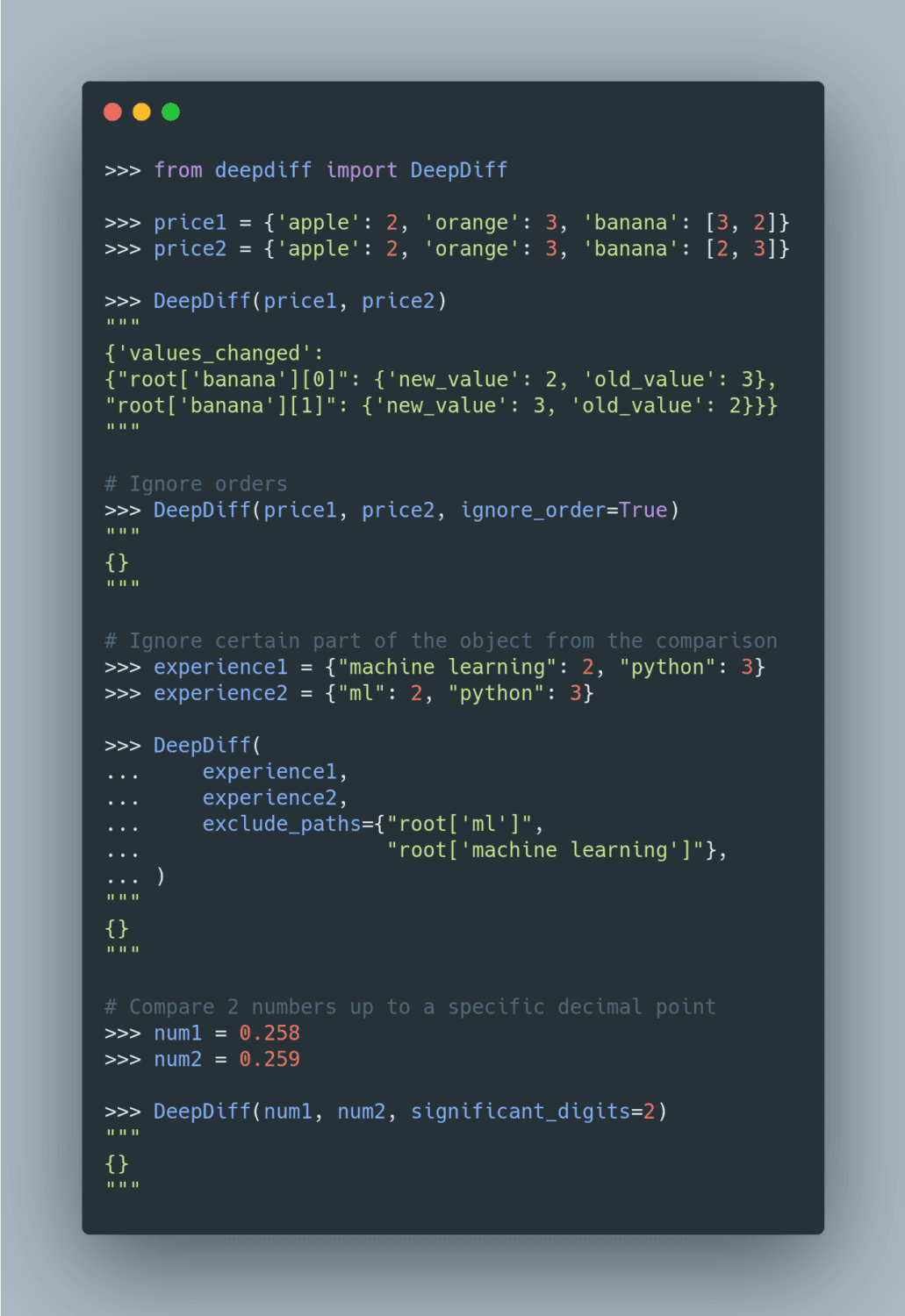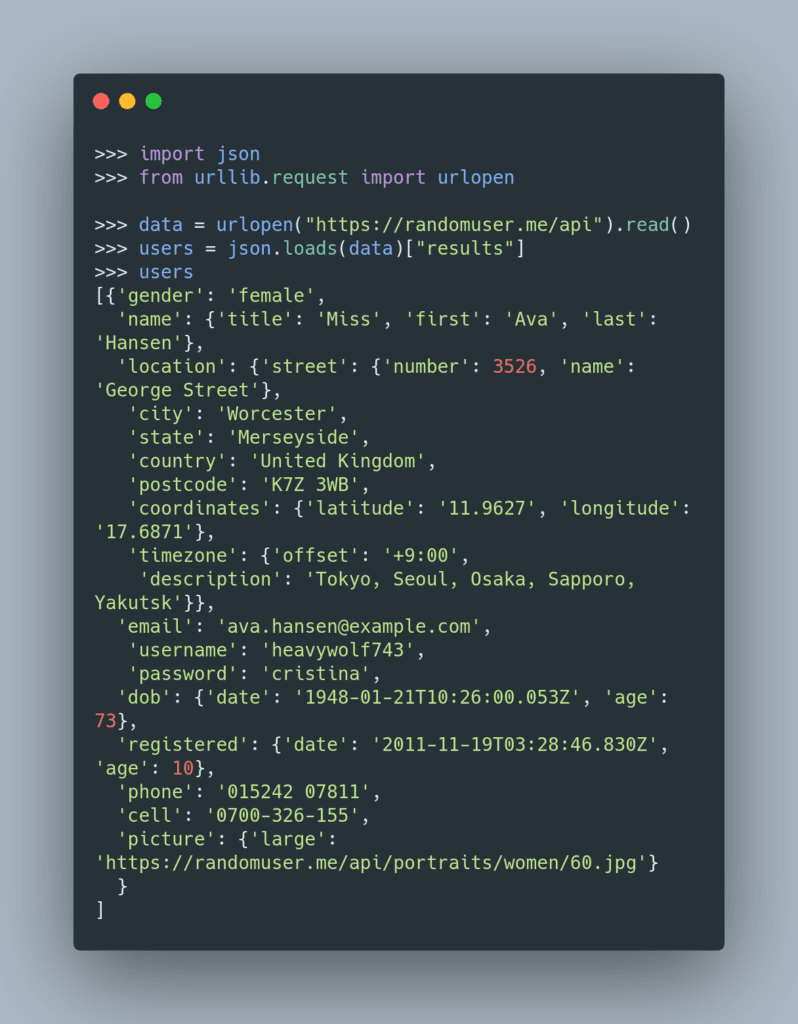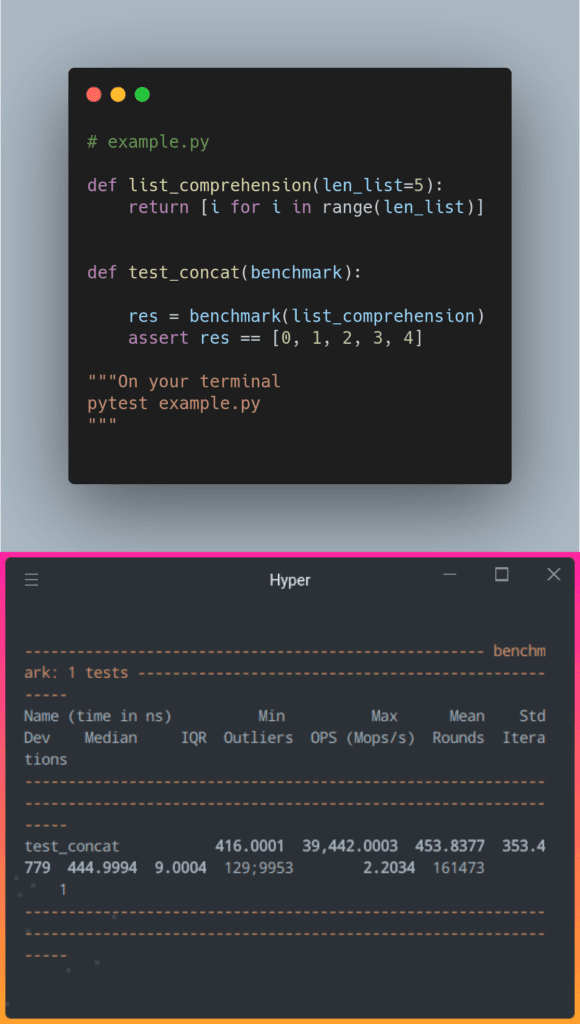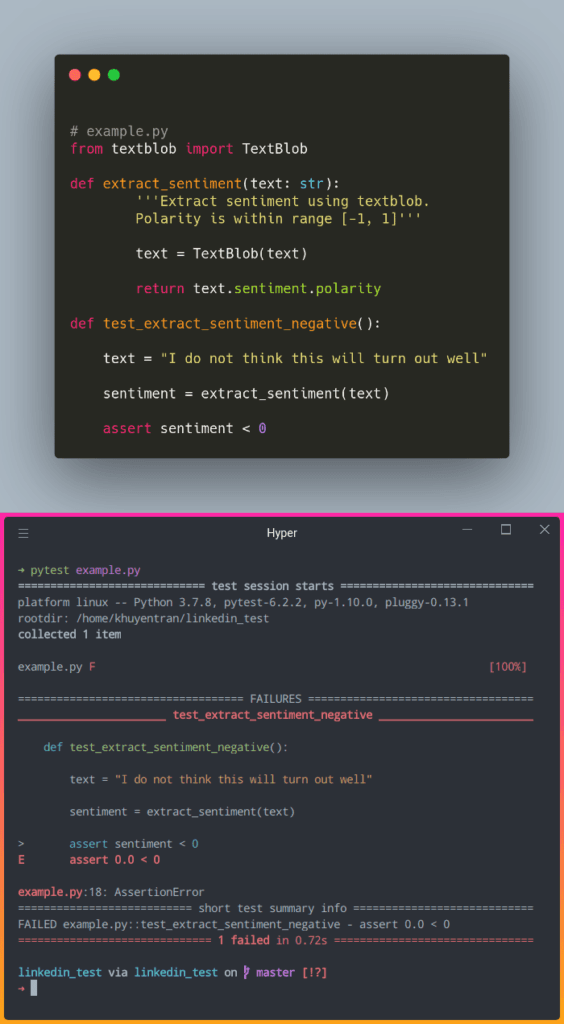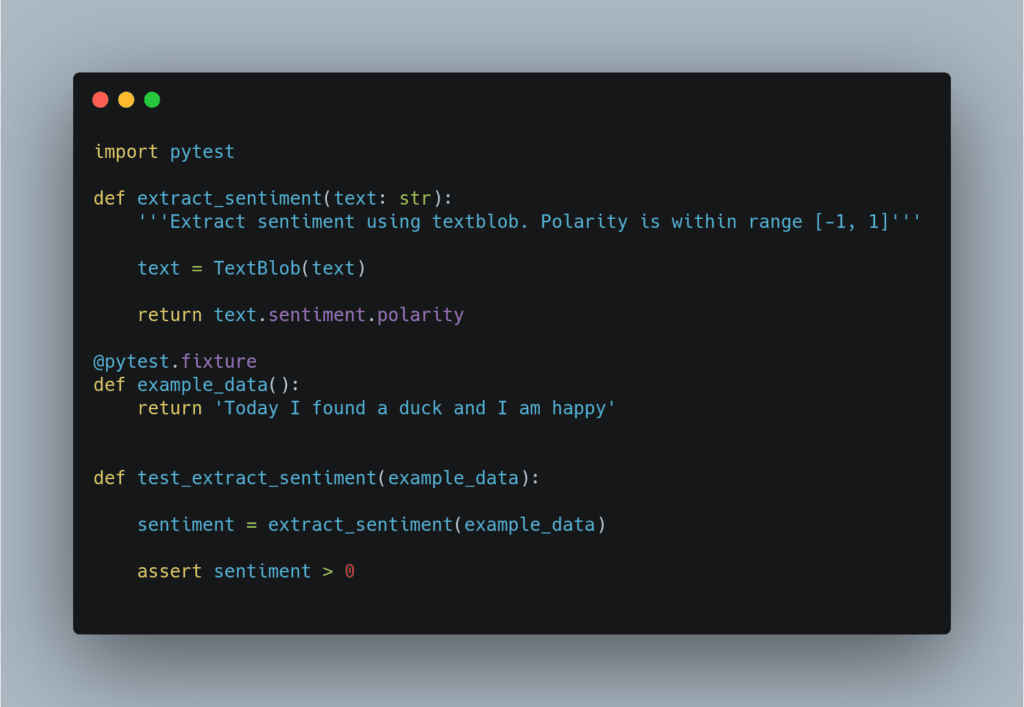pytest-sugar: Show the Failures and Errors Instantly With a Progress Bar
It can be frustrating to wait for a lot of tests to run before knowing the status of the tests. If you want to instantly see the failures and errors with a progress bar, use pytest-sugar.
pytest-sugar is a plugin for pytest. The code above shows how the outputs will look like when running pytest.
pytest-sugar: Show the Failures and Errors Instantly With a Progress Bar Read More »


